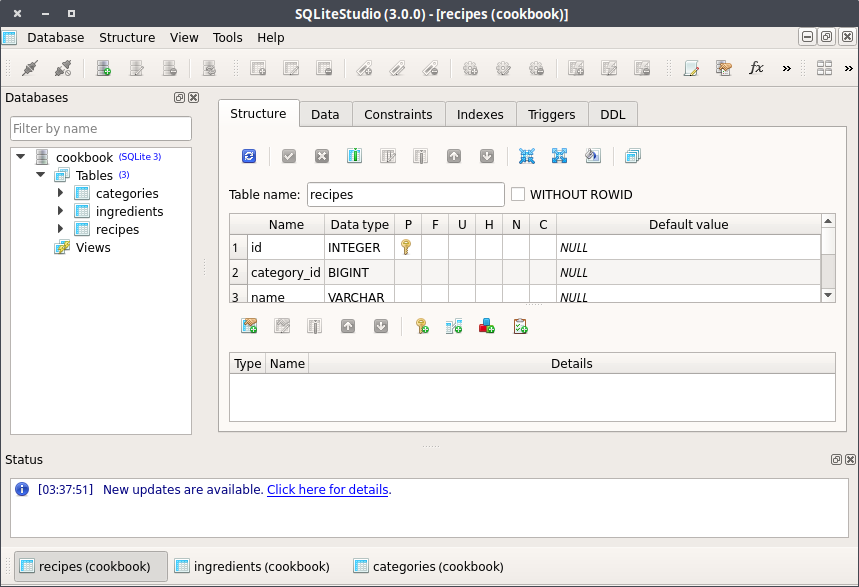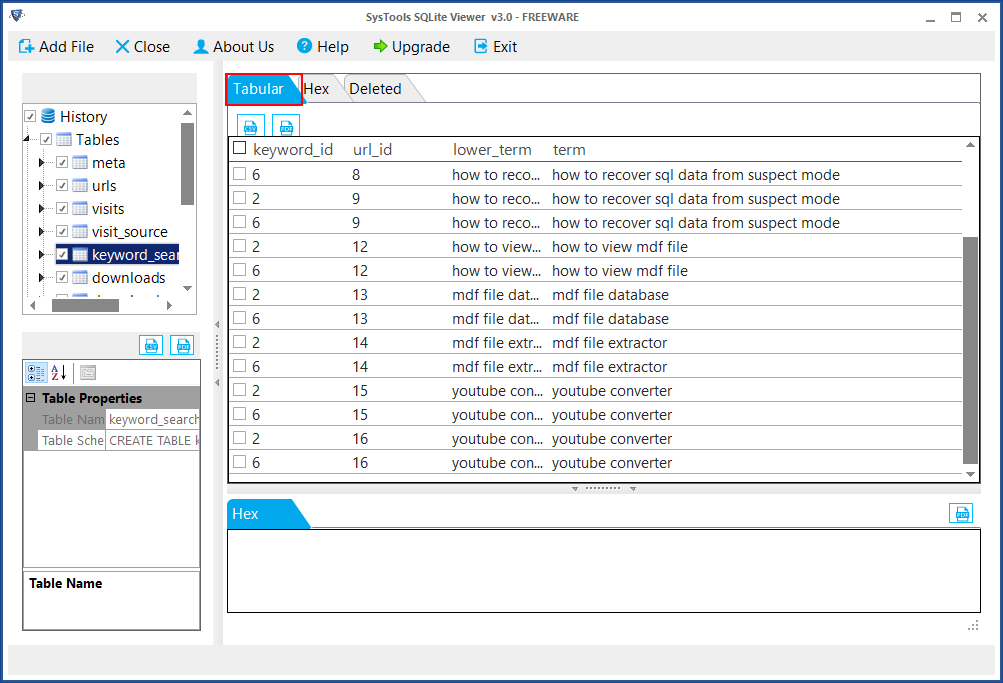

- SQLITE BROWSER SUPPORT HOW TO
- SQLITE BROWSER SUPPORT INSTALL
- SQLITE BROWSER SUPPORT FULL
- SQLITE BROWSER SUPPORT CODE
- SQLITE BROWSER SUPPORT FREE
Transactions are ACID (atomic, consistent, isolated, and durable) compatible, even after system crashes and power failures.Implements most of the SQL92 except some features.Available as a single ANSI-C source-code file that can be easily dropped into another project.Great for use as an application file format.The database file format is cross-platform (Linux, Mac OS-X, Android, iOS and Windows) - you can freely copy a database between 32-bit and 64-bit systems or between big-endian and little-endian architectures.A complete database is stored in a single cross-platform disk file.Zero-configuration - no setup or administration needed.Self-contained: no external dependencies.To check the latest stable release and the details release history click here.
SQLITE BROWSER SUPPORT CODE
SQLITE BROWSER SUPPORT FREE
The code for SQLite is available in the public domain and thus it is free for use for any purpose, commercial or private. const db = new sqlite3.Database("db.SQLite is a lightweight, in-process library that implements a self-contained, serverless, zero-configuration, transactional SQL database engine. Then, in the entry point index.js file, add the code snippet below to create and connect the application to an SQLite Database.
SQLITE BROWSER SUPPORT INSTALL
To get started, run the command below to install the sqlite3 dependency. With the server setup for our application, let's create and connect our application to save our blog details. Then we configured the app to listen to port 8000. We configured our app to render our static files using the express.static method, which takes the path to the static folder (public), we created the root route of our application and rendered the index.html file. In the code snippet, we import express to create our server and the path module. Res.sendFile(path.join(_dirname, "public/index.html")) Īpp.listen(8000, () => console.log("Server is running on Port 8000")) Creating the index.js file Next, create an index.js file in the project root directory with the following code snippets below: const express = require("express") Īpp.use(express.static(path.join(_dirname, "public"))) Then, we'll create a couple of folders and files in the public folder: With our application setup, let's install Express to create our Node.js server with the command below: npm install express Installing express ┗ 📜package.json Set up an Express server Next, create the following folder structure in our project folder: The above command creates a package.json file for the application. Then, we'll initialize a Node.js application with the commands below: npm init -y

To get started, we'll create our project folder with the command below: mkdir PWA & cd PWA The user will be able to interact with it like other PWAs, such as the Twitter PWA. To demonstrate the power of progressive web applications, we'll be building a simple blog application.
SQLITE BROWSER SUPPORT FULL
They can still save the PWA to their home screen it's installable without the need for a full download. Users consume less data when choosing a PWA over a native version of the same application. They operate on demand and are always available without consuming valuable smartphone memory or data. PWAs can sometimes outperform native apps in terms of efficiency. Progressive Web Apps (PWAs) are web apps that use service workers, manifests, and other web-platform features and progressive enhancement to provide users with an experience comparable to native apps. Let's start with an introduction to progressive web apps.
SQLITE BROWSER SUPPORT HOW TO
This tutorial will teach you how to build an offline-first application with Node.js and a SQLite database. Progressive web applications, which feel like native applications but run like web applications, are often built on this paradigm. "Offline first" is an application development paradigm in which developers ensure that an app's functionality is unaffected by a temporary loss of network connectivity.


 0 kommentar(er)
0 kommentar(er)
